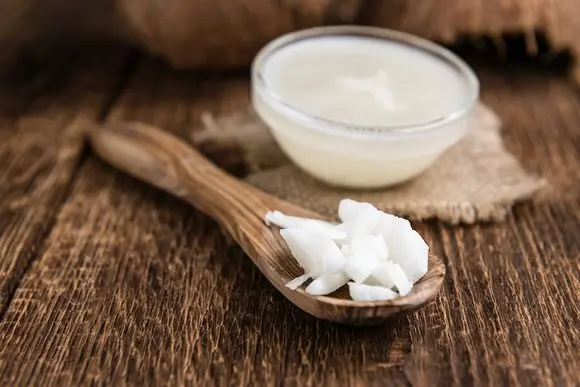Contents
*Overview of the best according to the editors of Healthy Food Near Me. About selection criteria. This material is subjective, is not an advertisement and does not serve as a guide to the purchase. Before buying, you need to consult with a specialist.
Despite the fact that the phrase “stainless steel” is associated with cleanliness and practicality, dirt and stains still appear on it. Fortunately, there are many quick ways to clean it up. We’ve put together tips to help you get rid of stains on stainless steel in minutes!
How to remove stains from stainless steel
You can get rid of stains on stainless steel with the help of improvised means. It is not necessary to use harsh chemicals. We have selected the most effective ways for you:
Mix dish soap and baking soda in a 1 to 1 ratio. Apply a little paste to the rough side of a sponge or an old toothbrush. Gently rub the stain in the direction of the grooves of the stainless steel. This method is well suited for ordinary stains. Baking soda is also good for removing burnt-on food residue.
If baking soda doesn’t work, dip a clean, soft brush into undiluted table vinegar. Gently rub the stain in the direction of the grooves of the stainless steel. Rinse the item of vinegar with water and wipe dry. Alternatively, you can immediately spray the vinegar with a spray bottle onto the surface to be cleaned, then wipe it with a brush or paper towel.
Stains in the sink can be removed with scouring powder. Sprinkle a powder like Chistina or Pemolux on a clean, damp cloth. Scrub the sink in a circular motion, paying particular attention to stains. Rinse off the cleaner and wipe the sink dry. To keep it clean and shiny longer, rub it with wax paper.
After washing, stainless steel can be polished. For the finishing touch, use stainless steel polish, lemon oil, or a silicone-based spray. You can also use baby, mineral or olive oil. Apply the substance to a clean cloth and rub the object in the direction of the grooves of the steel. Do not polish cutlery!
How to remove rust from stainless steel
Contrary to expectations (and even the name), traces of rust can appear even on stainless steel. Luckily, cleaning it up is pretty easy:
Prepare the soda paste. To do this, mix soda and water in a ratio of 1 to 2 – for example, 1 tablespoon of soda and 2 tablespoons of water.
Get an old soft bristled toothbrush. Dip it in the soda paste and rub the rust stains.
Rinse the surface of the paste and wipe dry with a paper towel. Rust should come off.
You can also wash stainless steel from rust stains with an acid agent – vinegar or lemon.
Soak a sponge in vinegar and rub the rusted surface in the direction of the grooves on the steel. If possible, simply immerse the item in this liquid for 10-15 minutes. Then rinse thoroughly. Vinegar is easily replaced with lemon juice or a strong solution of citric acid.
All work must be carried out with rubber gloves.
How to wash stainless steel?
Pots, pans and stainless steel sinks can be cleaned with regular flour. First, clean the surface with a sponge and warm soapy water. Wipe the surface dry. When the dish is dry, sprinkle flour on it. Use a clean cloth or paper towel to polish the metal. This is great for removing soot and dirt.
Use glass cleaner to remove fingerprints. Spray generously on the surface and wipe it with a dry, clean cloth. Instead of a glass cleaning spray, you can also prepare your own cleaning solution. Take a two-liter bottle and add 1 cup of vodka and a quarter cup of table vinegar. Fill the bottle with water, put on the spray nozzle and shake gently. This method is best for removing fingerprints from stainless steel.
Add some shine with hardware polish, which can be used as an alternative to glass cleaner. Simply spray some polish onto a clean cloth and wipe the stainless steel surface with it.
Sparkling water is perfect for cleaning the faucet. Fill a spray bottle with soda and spray onto the surface to be cleaned. Rub in the direction of the grooves until the surface shines. If you are cleaning a stainless steel sink, plug the drain with a stopper and pour the drink into the sink until it covers the bottom. Scrub the bottom and sides of the sink in a circular motion with a clean cloth, dipping it in the soda if necessary. Use clear drinks like Sprite or 7-Up.
Useful Tips
Test your chosen cleaner on a small, inconspicuous area of stainless steel.
Use rubber gloves when handling vinegar and other powerful chemicals.
After cleaning cutlery, rinse thoroughly with water before use.
Avoid using products that can damage stainless steel. Chlorine-based cleaners can leave streaks and damage steel. Alcohol, ammonia and mineral spirits can damage the protective layer of the stainless steel surface. Metal sponges and brushes can scratch the surface, causing rust to form on it.
To avoid stubborn stains, wipe dry your sink once after washing dishes.
Attention! This material is subjective, is not an advertisement and does not serve as a guide to the purchase. Before buying, you need to consult with a specialist.










